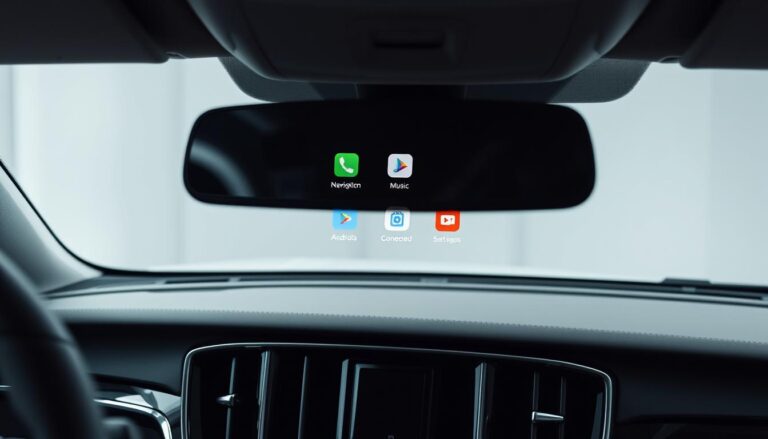Maintaining a Volvo Semi is crucial for its longevity and performance. One essential aspect of this maintenance is accessing the engine compartment, which requires releasing the Hood Release mechanism.
Regular Truck Maintenance involves checking and servicing various components under the hood. Understanding how to access this area is vital for any Volvo Semi owner or operator.
Key Takeaways
- Understanding the Hood Release mechanism is crucial for maintenance.
- Regular checks help prevent potential issues with the Volvo Semi.
- Proper Truck Maintenance ensures the longevity of the vehicle.
- Accessing the engine compartment is essential for servicing.
- Knowing how to open the hood is a fundamental skill for Volvo Semi owners.
Understanding Volvo Semi Hood Mechanisms
Understanding the hood mechanism of your Volvo Semi is crucial for maintenance and repairs. The hood mechanism is a complex system designed to provide access to the engine and other critical components.
Different Hood Types Across Volvo VNL, VNR, and VHD Models
Volvo Semi trucks come in various models, including VNL, VNR, and VHD, each with its unique hood design. The VNL models feature a tilt-forward hood, while VNR models have a more aerodynamic design. VHD models are built for heavy-duty applications and have a robust hood mechanism.
| Model | Hood Type | Key Features |
|---|---|---|
| VNL | Tilt-Forward | Easy access to engine, aerodynamic design |
| VNR | Aerodynamic | Reduced wind resistance, sleek design |
| VHD | Heavy-Duty | Robust construction, enhanced durability |
Basic Components of the Hood System
The hood system consists of several key components, including the hood itself, hinges, latches, and safety props. These components work together to ensure safe and reliable operation.
How Volvo’s Hood Design Differs from Other Manufacturers
Volvo’s hood design is distinct from other manufacturers due to its emphasis on safety, accessibility, and aerodynamics. The use of advanced materials and ergonomic design principles sets Volvo apart.
Safety Precautions Before Opening the Hood
Ensuring your safety while maintaining your Volvo Semi starts with proper hood opening procedures. Before you begin, it’s essential to prepare your environment and yourself for the task.
Parking and Securing Your Truck
First, ensure your Volvo Semi is parked on a level surface. Engage the parking brake and put the transmission in neutral or park, depending on your model’s specifications. This step is crucial for preventing any accidental movements.
Personal Safety Equipment Recommendations
Wearing appropriate personal safety equipment is vital. This includes safety glasses to protect your eyes from debris and gloves to improve grip and protect your hands. For more detailed safety guidelines, refer to your Volvo Operator’s Manual.
Engine Cool-Down Requirements
Allow your engine to cool down before opening the hood. A hot engine can cause serious burns. Check the coolant level and ensure the engine is at a safe temperature. This precaution is crucial for your safety and the longevity of your engine.
Required Tools for Opening a Volvo Semi Hood
Having the correct tools is essential for safely opening the hood of your Volvo Semi. The right equipment not only makes the process smoother but also helps prevent potential damage to the hood or its mechanisms.
Standard Tools Needed
The basic toolkit for opening a Volvo Semi hood includes a flathead screwdriver and a socket wrench. These tools are typically sufficient for releasing the primary latch.
Optional Specialized Equipment
For more complex operations or to make the process easier, consider using hood release tools specifically designed for Volvo Semi trucks. These can provide a safer and more efficient way to open the hood.
Emergency Tool Alternatives
In situations where standard tools are not available, alternatives such as a pliers or a adjustable wrench can be used. However, caution should be exercised to avoid damaging the hood’s locking mechanism.
| Tool Type | Primary Use |
|---|---|
| Flathead Screwdriver | Releasing primary latch |
| Socket Wrench | Handling secondary locks |
| Hood Release Tool | Safe and efficient hood opening |
How to Open the Hood of a Volvo Semi
The process of opening the hood on a Volvo Semi involves several key steps that ensure safe access to the engine. Understanding these steps is crucial for maintenance and repairs.
Locating the Hood Release Mechanism
The first step is to locate the hood release mechanism. Typically, this is found inside the cabin or under the hood itself. Consult your owner’s manual for the exact location on your Volvo Semi model.
Releasing the Primary Latch
Once you’ve located the release mechanism, you’ll need to activate it to release the primary latch. This usually involves pulling a lever or pressing a button. The primary latch is designed to release the hood from its closed position.

Disengaging Secondary Safety Locks
After releasing the primary latch, you’ll need to disengage any secondary safety locks. These are designed to prevent the hood from opening accidentally. The process for disengaging these locks can vary depending on the model of your Volvo Semi.
Proper Technique for Lifting the Hood
With the latches released, you can now lift the hood. It’s essential to do this carefully to avoid damaging the hood or injuring yourself. Use both hands and lift the hood slowly, ensuring it is fully open and secure before accessing the engine compartment.
| Step | Description |
|---|---|
| 1 | Locate the hood release mechanism |
| 2 | Release the primary latch |
| 3 | Disengage secondary safety locks |
| 4 | Lift the hood using proper technique |
By following these steps, you can safely and effectively open the hood of your Volvo Semi, allowing for easy access to the engine for maintenance and repairs.
Securing the Hood in Open Position
Properly securing the open hood of your Volvo semi-truck is essential for safe and efficient maintenance. After accessing the engine compartment, it’s crucial to ensure the hood is held securely in place to prevent it from falling or closing unexpectedly.
Using Built-in Hood Props
Volvo semi-trucks are equipped with built-in hood props designed to hold the hood in an open position. To use these props, locate the designated slots or brackets on the hood and the truck’s frame, then carefully lower the hood onto these supports. This mechanism provides a safe and stable way to keep the hood open.
Alternative Support Methods
In cases where the built-in hood props are not functioning or are unavailable, alternative support methods can be employed. These may include hydraulic or pneumatic struts that can be installed according to the manufacturer’s instructions. It’s essential to consult your Volvo maintenance manual for approved alternatives.
Safety Checks After Opening
After securing the hood, perform a series of safety checks. Ensure the hood is stable, and the props or alternative supports are securely in place. Verify that the area around the truck is clear of obstacles and personnel. A checklist can be useful for this step:
| Safety Check Item | Status |
|---|---|
| Hood Props Engaged | Yes / No |
| Area Clear of Obstacles | Yes / No |
| Personnel Warned | Yes / No |
By following these steps and utilizing the built-in hood props or approved alternative support methods, you can ensure a safe working environment under the hood of your Volvo semi-truck.
Common Challenges When Opening Volvo Semi Hoods
There are multiple challenges that Volvo semi-truck drivers face when trying to open the hood. Understanding these issues can help in troubleshooting and resolving them efficiently.
Dealing with Stuck or Frozen Mechanisms
A common issue is a stuck or frozen hood release mechanism. This can be due to corrosion or wear and tear. Applying a penetrating lubricant can help loosen the mechanism. In cases where the mechanism is severely corroded, replacement may be necessary.

Addressing Weather-Related Issues
Weather conditions, such as extreme cold or heat, can affect the hood’s operation. For instance, freezing temperatures can cause mechanisms to freeze, while extreme heat can cause parts to expand, making the hood harder to open. Using weather-resistant materials and maintaining the hood’s mechanisms can mitigate these issues.
Troubleshooting Damaged Components
Damaged components, like a broken hood release cable or latch, can prevent the hood from opening. Inspecting these components regularly can help identify damage early. When damage is found, repairing or replacing the affected parts is crucial.
What to Do When Release Mechanisms Fail
If the release mechanism fails, it may be necessary to manually release the hood or seek professional assistance. In some cases, a
“The failure of the hood release mechanism is often a sign of a larger issue that needs to be addressed.”
Keeping spare parts, like cables and latches, can be beneficial for quick repairs.
Maintenance Tips for Smooth Hood Operation
The hood of your Volvo semi is a critical component that necessitates regular upkeep for optimal functionality. To maintain its efficiency and prolong its lifespan, several key maintenance practices should be observed.
Regular Lubrication Points
Lubrication is essential for the moving parts of your Volvo semi’s hood mechanism. Regularly lubricate the hinges, latches, and other movable components to prevent rust and ensure smooth operation. Use a high-quality lubricant suitable for heavy-duty applications.
Inspecting Hood Components
Regular inspections are vital to identify any potential issues before they become major problems. Check the hood’s hinges, latches, and cables for signs of wear or damage. Replace any damaged components promptly to maintain the hood’s integrity.
Preventative Maintenance Schedule
Establishing a preventative maintenance schedule can significantly reduce the risk of hood-related issues. It’s recommended to inspect and maintain the hood mechanism every 10,000 to 15,000 miles, or as specified in your Volvo semi’s maintenance manual.
Properly Closing the Hood After Maintenance
After completing any maintenance tasks, ensure the hood is properly closed and secured. Check that all latches are fully engaged and the hood is tightly shut to prevent any operational issues or safety hazards.
| Maintenance Task | Frequency | Importance Level |
|---|---|---|
| Lubrication of Hinges and Latches | Every 5,000 miles | High |
| Inspection of Hood Components | Every 10,000 miles | High |
| Cable and Spring Inspection | Every 15,000 miles | Medium |
“Regular maintenance not only prolongs the life of your Volvo semi’s hood but also ensures safe and efficient operation.”
By following these maintenance tips and adhering to a preventative maintenance schedule, you can ensure the smooth operation of your Volvo semi’s hood, enhancing both safety and performance.
Conclusion
Properly opening and maintaining the hood of your Volvo Semi is crucial for effective Volvo Semi Maintenance. By understanding the hood mechanisms, following safety precautions, and using the right tools, you can ensure a smooth operation.
The steps outlined in this article provide a comprehensive Hood Release Summary, from locating the release mechanism to securing the hood in the open position. Regular maintenance, including lubrication and inspection of hood components, is essential for preventing issues and prolonging the lifespan of your truck.
By incorporating these Truck Maintenance Tips into your routine, you can enhance the performance and reliability of your Volvo Semi. Whether you’re a seasoned driver or new to operating these vehicles, mastering hood operation is a critical aspect of overall truck maintenance.
FAQ
What are the different types of hood mechanisms used in Volvo Semi trucks?
Volvo Semi trucks, including models like VNL, VNR, and VHD, utilize various hood mechanisms. The specific type can depend on the model year and configuration, but they generally include a primary latch and secondary safety locks.
How often should I lubricate the hood mechanism on my Volvo Semi?
Regular lubrication is essential for smooth hood operation. It’s recommended to lubricate the hood hinges and latch at least every 6 months or as specified in your Volvo Semi’s maintenance schedule.
What safety precautions should I take before opening the hood of my Volvo Semi?
Before opening the hood, ensure your truck is parked on a level surface and secured. Wear personal safety equipment like gloves and safety glasses. Allow the engine to cool down to prevent burns.
Can I open the hood of my Volvo Semi without the standard tools?
While it’s possible to open the hood without standard tools in an emergency, it’s not recommended. Using the correct tools, such as those specified for your Volvo Semi model, will prevent damage to the hood mechanism.
How do I troubleshoot a stuck hood mechanism on my Volvo Semi?
For a stuck hood mechanism, first check for any debris or corrosion. Apply a suitable lubricant to the hinges and latch. If the issue persists, consult a professional mechanic or a Volvo dealership for assistance.
What are the common challenges faced when opening the hood of a Volvo Semi?
Common challenges include stuck or frozen mechanisms, weather-related issues, and damaged components. Regular maintenance, such as lubrication and inspection, can help mitigate these problems.
How do I properly secure the hood in the open position on my Volvo Semi?
Use the built-in hood props or alternative support methods as recommended by Volvo for your specific model. Always perform safety checks after opening to ensure the hood is securely held in place.
What maintenance is required to ensure smooth operation of the hood on my Volvo Semi?
Regular maintenance includes lubricating the hood hinges and latch, inspecting hood components for damage or wear, and following a preventative maintenance schedule. Properly closing the hood after maintenance is also crucial.



